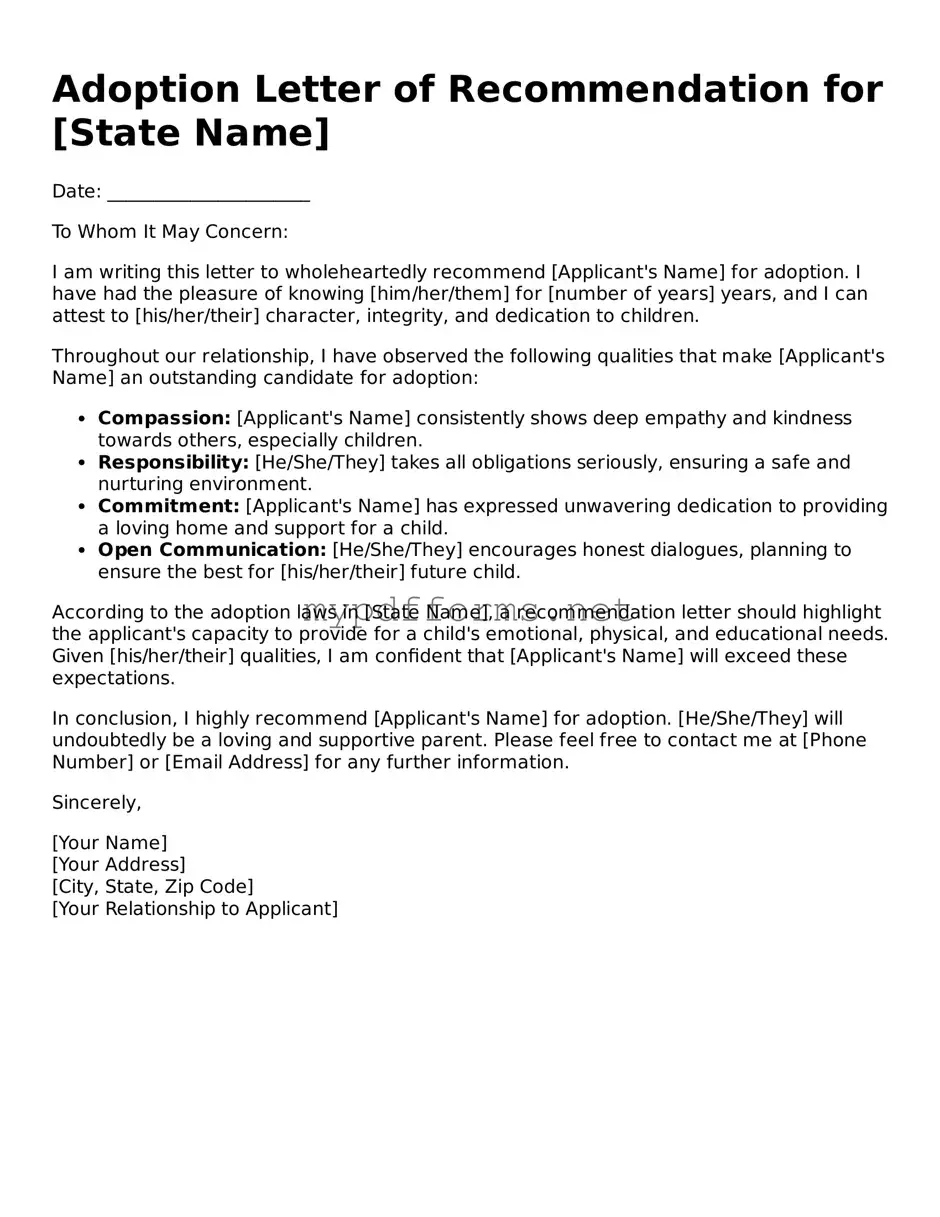Adoption Letter of Recommendation Template
The Adoption Letter of Recommendation form is a document that provides a written endorsement for individuals seeking to adopt a child. This form typically includes personal insights about the prospective adoptive parents, highlighting their suitability and readiness for the responsibilities of adoption. Completing this form is an important step in the adoption process, ensuring that the child's best interests are prioritized.
Ready to get started? Fill out the form by clicking the button below.
Modify Document Here
